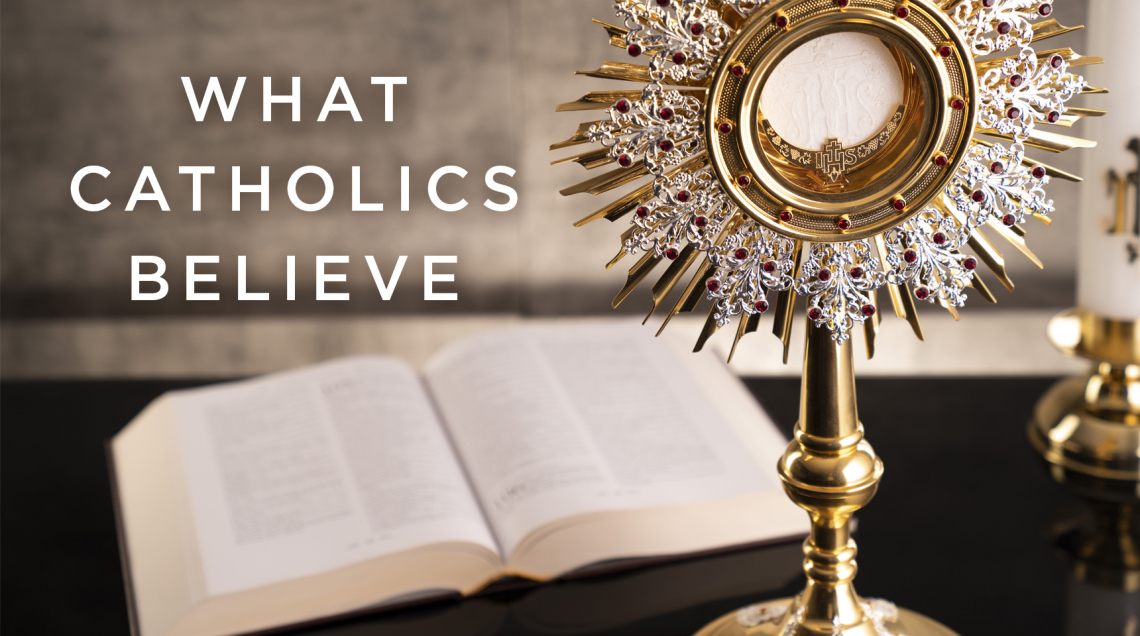The Mass: The Gloria: We give you thanks for your great glory

At the beginning of Mass on most Sundays, we pass from words expressing penitence for our sins to the praise of God the Father and God the Son. The Gloria is an ancient hymn that resembles the hymns to Christ found in the New Testament, such as John 1:1-17, Philippians 2:6-11, and Colossians 1:15-20. The Gloria is attested in liturgical manuscripts as early as the fourth century A.D. but was originally sung at Morning Prayer, not at Mass. By the sixth century, for reasons that remain unknown, it found its way to the beginning of Mass but only in those Masses celebrated by a bishop on certain days. Eventually, by the end of the eighth century, it was sung at Mass celebrated either by a bishop or a priest on specific days.
The Gloria is associated with festive celebrations on solemn occasions. Therefore, it is omitted on the Sundays of Lent since that is a penitential time of the year. The opening line of the Gloria quotes the song of the angels to the shepherds watching their flocks by night in the fields outside Bethlehem (cf. Luke 2:14). Because of this association with Christmas, the Gloria is likewise omitted on the Sundays of Advent. On weekdays, it is sung or said on feasts of the Lord, of the Blessed Virgin Mary, and of the apostles, as well as on all days that are solemnities.
The Gloria essentially consists of two parts. The first part praises God the Father, and the second part praises Jesus as God the Son. We might not think of that as we are singing the Gloria, but we are speaking to two different persons of the Blessed Trinity as the hymn progresses. When we say, “We praise you,” the “you” we are addressing is God the Father. That only becomes clear at the end of a long sentence of heaped up praises to the First Person of the Blessed Trinity. The next two sentences address Jesus as Son of God, the Second Person of the Blessed Trinity. We praise Jesus as Only Begotten Son, Lamb of God, Son of the Father, Holy One, the Most High. We ask Jesus to have mercy on us one last time. In that sense, the Gloria prolongs the prayers for the forgiveness of our sins, which we made during the Penitential Act that precedes it.
Finally, the hymn ends with an invocation of the Trinity, naming Jesus, the Holy Spirit, and the Father. The earliest manuscripts of the Gloria do not have any mention of the Holy Spirit however. This is taken to be a sign of the great antiquity of the text of the Gloria. The Church eventually came to understand fully the personhood of the Holy Spirit within the unity of the Trinity by the time of the First Council of Constantinople (381 A.D.). Therefore, liturgical texts that refer only to God the Father and Jesus as Son of God without mentioning the Holy Spirit are thought to originate prior to that date.
The Gloria is a hymn of praise; therefore, it is best to sing it whenever possible. Like the Alleluia at Mass, it is a part of Mass that almost demands that it be sung by its very nature. If the Gloria is not sung, it is never omitted on the days when it is required but is simply recited. The Gloria can be sung by everyone together, the most common method. But it can also be sung in two parts, with the choir and the assembly alternating with each other every few lines. The Gloria never had a refrain at any time in its history. While a refrain might make it easier to sing the Gloria, adding a refrain does not do justice to the unity of the text, which was composed over time as one single song of praise from beginning to end without interruption. Many musical settings now exist in English that make it possible for parishes, even on weekdays, to sing the Gloria.
Having asked forgiveness for our sins and given God praise and glory for His mercy, we now join the priest in praying to God the Father in the collect, or opening prayer, of the Mass. In the next column, I will identify the various component parts to such prayers and how we can participate more fully in offering God that prayer with the priest celebrant.










